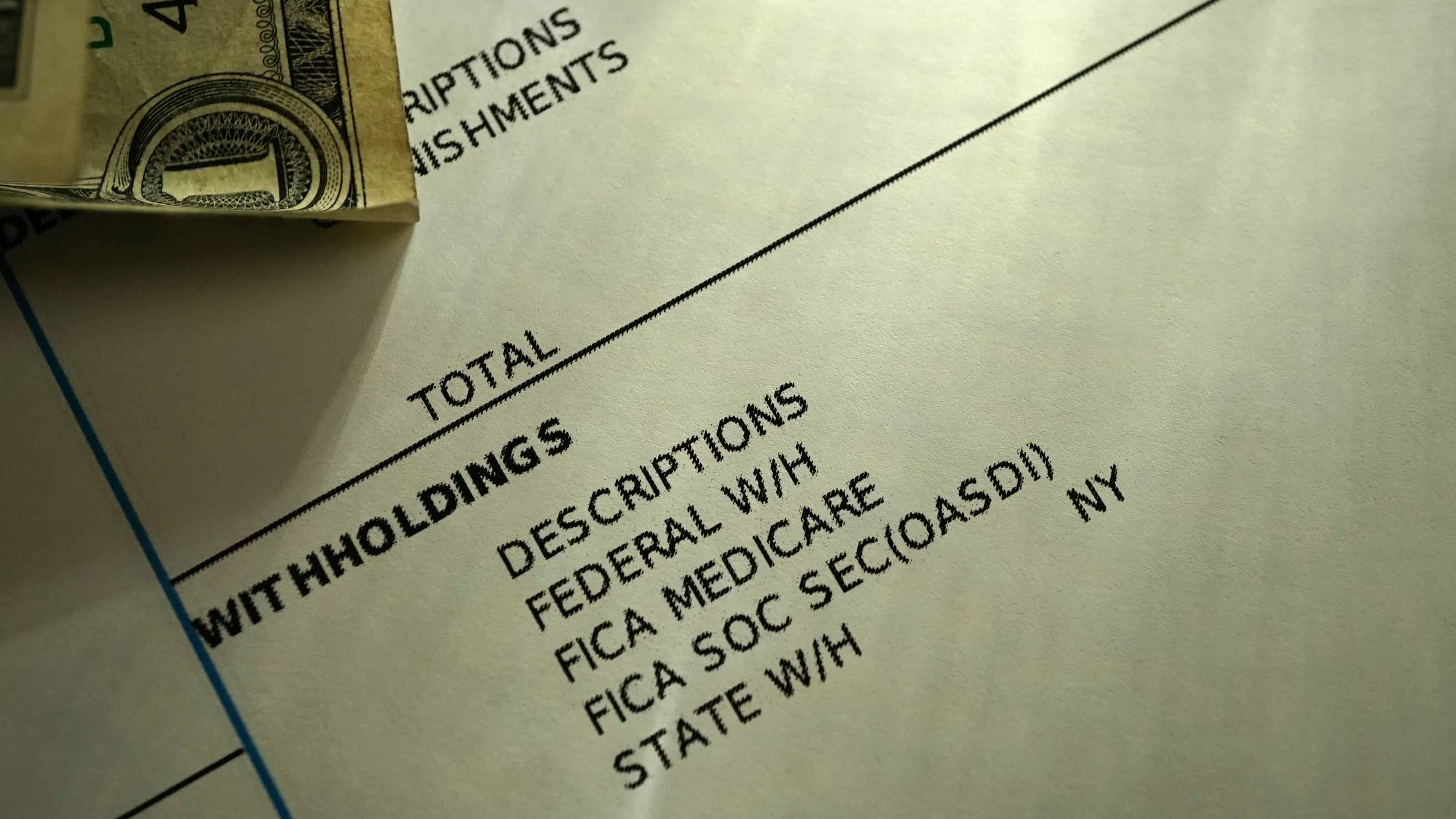Flexible Spending Account vs. Dependent-Care Credit
A couple of tax breaks are available for working parents who pay for child care, but you'll have to choose one or the other.

Is it better to pay for child-care expenses using a flexible spending account or to claim the dependent-care credit on my tax return?
Many people will have that question over the next few months, as they make decisions about their employee benefits for 2010. You may be allowed to set aside up to $5,000 in pretax money for the year in a flexible spending account for dependent-care expenses. Or you could claim those expenses for the dependent-care credit when you file your 2010 tax return. But you can't use the same expenses for both tax breaks.
Most families who have access to a dependent-care flexible spending account at work would be better off running their child-care expenses through the FSA.
From just $107.88 $24.99 for Kiplinger Personal Finance
Become a smarter, better informed investor. Subscribe from just $107.88 $24.99, plus get up to 4 Special Issues

Sign up for Kiplinger’s Free Newsletters
Profit and prosper with the best of expert advice on investing, taxes, retirement, personal finance and more - straight to your e-mail.
Profit and prosper with the best of expert advice - straight to your e-mail.
Money you set aside in a flexible spending account is not only subtracted from your paycheck before income taxes are calculated, but it also avoids the 7.65% Social Security and Medicare tax. So if you're in the 15% income-tax bracket, you won't have to pay the 15% federal tax or the 7.65% Social Security tax, which means that you'll avoid paying a total of 22.65% in taxes on that money. In that case, contributing the maximum $5,000 to your dependent-care flex plan cuts your tax bill by $1,133. The benefits get even better as your tax bracket rises. If you're in the 25% bracket, for example, you'll end up saving 32.65% in taxes on the money you contribute to the FSA -- and lowering your tax bill by $1,633. You'll save even more if your FSA contribution escapes state income taxes.
See our How Much Should I Put in My Flexible Spending Account? calculator to help figure out how much your contributions will lower your tax bill. (You can also use this calculator to figure out how much money to set aside in your FSA for medical expenses, which have separate contribution limits.)
Also keep in mind that you generally must use the money in the flexible spending account by December 31 (or in some cases by March 15 of the following year) or else you will lose it.
The dependent-care credit, however, can help lower your tax bill if you don't have a flexible spending account at work, and it's most valuable for people with very low incomes.
To qualify for the dependent-care credit, you must pay someone to watch your child, who has to be younger than 13, while you work or look for work. Both spouses must have earnings from a job or self-employment, unless one is a full-time student. You can take a 20% to 35% credit for up to $3,000 in child-care expenses for one child (the higher your income, the lower the percentage) or up to $6,000 in child-care expenses for two or more children. That means the credit ranges from $600 to $1,050 if you have one child, or $1,200 to $2,100 if you have two or more children. And remember that a tax credit lowers your tax liability dollar for dollar.
But you'll qualify for that maximum credit only if you have a very low income - currently less than $15,000. If your income is more than $43,000, you'll qualify for the 20% break, which means that if you have $5,000 in child-care expenses, you'd get a tax break of only $1,000.
See A Tax Break for Sending the Kids to Camp and Five Things to Know About the Child-Care Tax Credit for more information.
If you have two or more children and child-care expenses exceeding $5,000, you might be able to benefit from both the FSA and the dependent-care credit. You can set aside up to $5,000 in pretax money in your FSA, and claim the dependent-care credit for up to $1,000 in additional expenses.
You can sign up for the FSA during open-enrollment season, then keep track of your child-care expenses throughout the year and possibly qualify for the credit on the extra $1,000 in expenses when you file your 2010 tax return. If you qualify for the 20% credit on that $1,000, you'll save an extra $200 on your taxes.
Profit and prosper with the best of Kiplinger's advice on investing, taxes, retirement, personal finance and much more. Delivered daily. Enter your email in the box and click Sign Me Up.

As the "Ask Kim" columnist for Kiplinger's Personal Finance, Lankford receives hundreds of personal finance questions from readers every month. She is the author of Rescue Your Financial Life (McGraw-Hill, 2003), The Insurance Maze: How You Can Save Money on Insurance -- and Still Get the Coverage You Need (Kaplan, 2006), Kiplinger's Ask Kim for Money Smart Solutions (Kaplan, 2007) and The Kiplinger/BBB Personal Finance Guide for Military Families. She is frequently featured as a financial expert on television and radio, including NBC's Today Show, CNN, CNBC and National Public Radio.
-
 Dow Adds 646 Points, Hits New Highs: Stock Market Today
Dow Adds 646 Points, Hits New Highs: Stock Market TodayIt was "boom" for the Dow but "bust" for the Nasdaq following a December Fed meeting that was less hawkish than expected.
-
 5 Types of Gifts the IRS Won’t Tax: Even If They’re Big
5 Types of Gifts the IRS Won’t Tax: Even If They’re BigGift Tax Several categories of gifts don’t count toward annual gift tax limits. Here's what you need to know.
-
 The 'Scrooge' Strategy: How to Turn Your Old Junk Into a Tax Deduction
The 'Scrooge' Strategy: How to Turn Your Old Junk Into a Tax DeductionTax Deductions We break down the IRS rules for non-cash charitable contributions. Plus, here's a handy checklist before you donate to charity this year.
-
 Trump Wants You Out of the IRS, But You'll Have to Wait Until May
Trump Wants You Out of the IRS, But You'll Have to Wait Until MayIRS Some IRS employees won’t be able to resign using the buyout offer until the end of tax season.
-
 Why Your Bonus Check Is So Small: Understanding the Bonus Tax Rate
Why Your Bonus Check Is So Small: Understanding the Bonus Tax RateIncome Tax Tax withholding rules mean a portion of your bonus won’t make it into your bank account.
-
 2023 Social Security Tax Wage Base
2023 Social Security Tax Wage BaseWealthier Americans will have more Social Security taxes taken from their paychecks next year because more of their income will be subject to the tax.
-
 Your Guide to Open Enrollment 2023
Your Guide to Open Enrollment 2023Employee Benefits Health care costs continue to climb, but subsidies will make some plans more affordable.
-
 Young Professionals Could Avoid Six Figures in Lifetime Taxes With an HSA
Young Professionals Could Avoid Six Figures in Lifetime Taxes With an HSAhealth savings accounts Running the numbers shows how health savings accounts could save one couple $160,000 in taxes. With open enrollment coming up, millions of workers should consider this tool’s benefits.
-
 Answers to Frequently Asked Social Security Disability Questions
Answers to Frequently Asked Social Security Disability Questionspersonal finance Social Security Disability Insurance is there to help those who can’t work, but getting the benefits you need can be confusing and difficult. Read on for answers to some of the most common SSDI questions.
-
 3 Main Reasons Why the Government Denies Social Security Disability Benefits
3 Main Reasons Why the Government Denies Social Security Disability Benefitspersonal finance To help improve your chances at being approved for SSDI benefits, it helps to better understand why so many applicants get turned down.
-
 Five Big Tax Breaks at Work
Five Big Tax Breaks at Worktax planning Did the 2021 tax refund you expected turn into a surprise tax bill? Taking advantage of your employee benefits package could help you lower your taxable income.